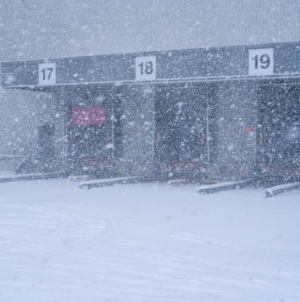-
AI startup Onton raises $7.5M to reinvent the way the world discovers and decides what to buy - November 26, 2025
-
Forklift Market Positions for Recovery as Confidence Expected to Build from 2026 - November 26, 2025
-
PROCare achieves 300% order capacity increase and 99% picking accuracy with Forterro’s ERP solution, Orderwise - November 26, 2025
-
DHL boosts operational efficiency and customer communications with HappyRobot’s AI Agents - November 25, 2025
-
STENA LINE TEAMS UP WITH CAMERA TELEMATICS TO DRIVE SAFETY IMPROVEMENTS AT IRISH SEA PORTS - November 25, 2025
-
Another design award for Toyota’s lithium-ion Traigo_i counterbalanced forklift - November 21, 2025
-
Stuut Technologies Raises $29.5 Million Series A Led by Andreessen Horowitz to Automate Accounts Receivable Work - November 20, 2025
-
INCREASED DIGITAL INVESTMENT REQUIRED TO KEEP PACE WITH 2026 CUSTOMS CHANGES - November 19, 2025
-
FULFILMENT SOLUTIONS FOR SPORTS MERCHANDISE: KEEPING OUR EYE ON THE GAME - November 19, 2025
-
COMPLEX, COSTLY & CONFUSING – THE END OF DE MINIMIS - November 19, 2025
Local councils drive to increase salt warehouse capacities ahead of winter.
Every October, the Winter Weather Survey is conducted by the Local Government Association to gather information about local councils’ preparations for the coming winter. This never fails to give a fascinating insight into our local authorities’ salt storage strategies.
The October 2018 survey revealed that 15% of authorities planned to have more salt in stock for the winter than previous years. 69% of those councils wanted to increase their resilience, and 31% wanted to reduce the need to restock further into the winter. As a result, councils ordered 1.4 million tonnes of salt ahead of the gritting season; 200,000 more than the stock prepared for the previous year. This makes 2018’s the largest stockpile of salt since national records began. As councils work towards meeting our infrastructure’s ever-increasing needs, Rubb ensures this by providing world-class salt storage facilities, proven to last for over 40 years with minimal to no long-term maintenance.
While some local authorities looked to expand, 79% did not plan to increase their salt stockpiles in 2018, with 48% stating that they are at their storage capacity’s limit. As our weather becomes more and more unpredictable, it can be difficult to plan ahead with confidence. But when the nation was caught off guard by 2017’s ‘Beast from the East’, it demonstrated that local authorities cannot be complacent when it comes to salt stockpiling.
Preparedness cannot be emphasised enough when considering the national toll a severe winter can have. 2010’s Whitehall-commissioned Winter Resilience Review found that the economic and social cost of winter weather disruption was around £1 billion.
The 2010 review also strongly encouraged councils to share resources. 2018’s survey echoed this, reporting that 76% of respondents were planning to share resources, with 55% of those intending to share salt. Warehouse storage space is important now more than ever if councils are meaning to hold more than their required levels. Rubb offers custom solutions for this with our expertly designed storage facilities. As with all of Rubb’s modular structures, they are easy to extend or relocate to support growing needs.
The price of salt is between £30 and £40 per tonne, so with upwards of a million tonnes being ordered per year it is paramount that this investment is protected. The key to keeping all this salt usable is guaranteeing that it is held under waterproof covers and fully protected from rain. In these ideal conditions it can be kept for several years, if not longer. If a salt pile is left in the open, however, it may only last a couple months. It will gradually become soaked through its exposure to the elements and will reach the point where the gritter can’t even spread it consistently. For such a vital resource, the best protection is necessary. Rubb structures are better engineered and built to hold up in environmental and corrosive conditions that often result in the failure of other inadequate structures. This is primarily achieved by the structure’s steel framework being hot dip galvanised in post production, to eliminate any chance of corrosion.
With our ever-growing infrastructure and increasingly unpredictable weather, local authorities are moving to ensure that they can effectively respond to whatever winter brings. An essential part of guaranteeing this is establishing salt warehouse facilities that can be relied upon, in which Rubb is a proud industry leader.
https://www.rubbuk.com/rubb-market-sectors/salt-storage-barns/

































